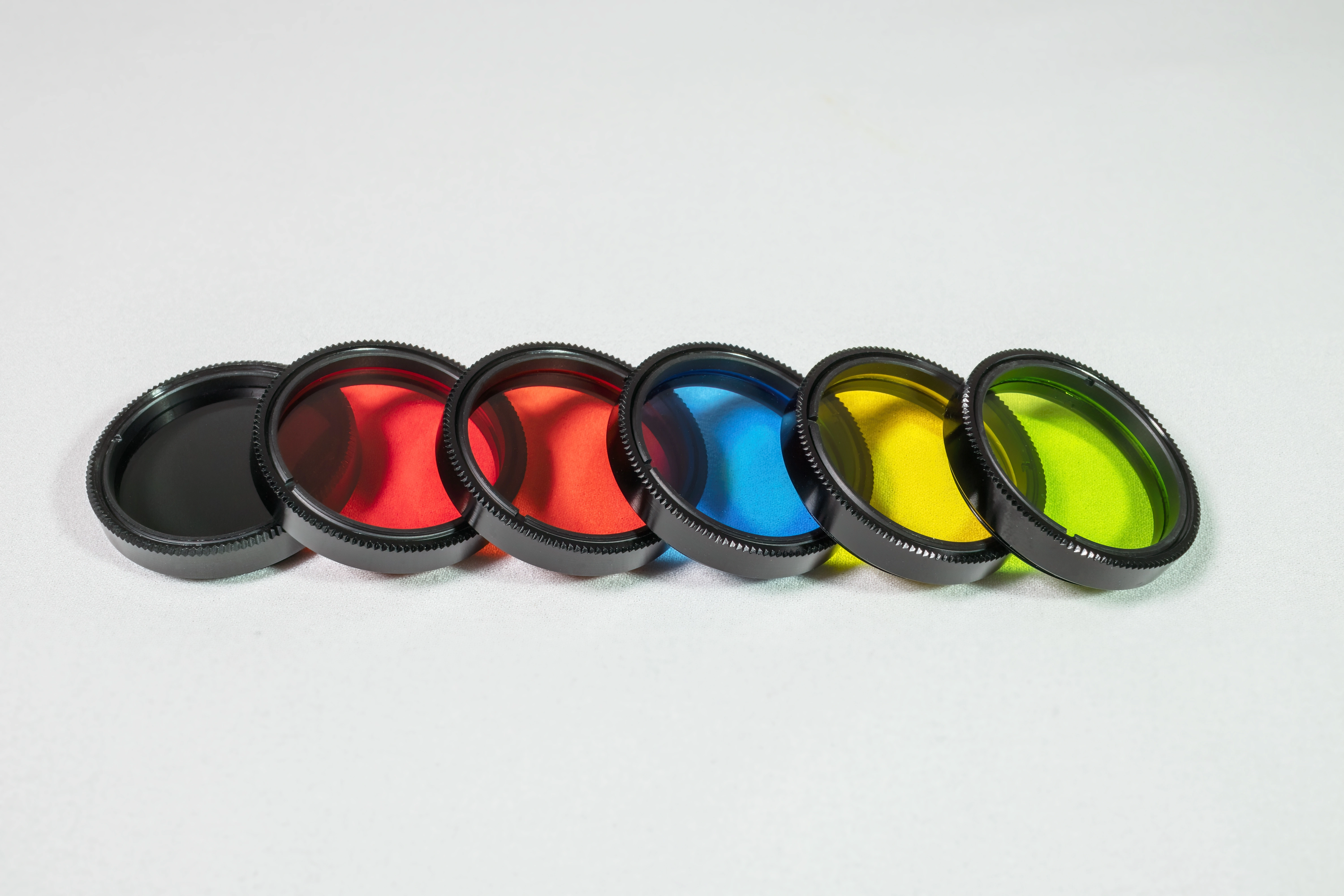Key Takeaways
- Avantier specializes in advanced optical filters for AR/VR/MR applications, offering anti-reflective coatings to reduce glare, color filters for vibrant visuals, polarizing filters to enhance contrast, and neutral density optical filters.
- Their high-quality neutral density filters optimize light entry, preventing eye strain.
Optical Filters for AR/VR/MR
Optical Filters are used in AR/VR/MR (Augmented Reality, Virtual Reality, and Mixed Reality) to enhance the visual experience and make it more realistic. Here are a few examples of how filters are used in these fields:

Anti-reflective coatings
AR/VR/MR devices often have multiple lenses and screens, which can cause reflections and glare that can distract from the virtual experience. Anti-reflective coatings on these surfaces can help to reduce these reflections and improve the clarity of the images.
What Aventier is using for coating can mainly be divided into two categories: physical vapor deposition (PVD) and chemical vapor deposition (CVD). PVD is a family of techniques that involve the deposition of a thin film of material onto a substrate by physical means, such as thermal evaporation, electron beam evaporation, etc. CVD is a technique that involves the deposition of a thin film of material onto a substrate by chemical means, such as plasma-enhanced CVD, low-pressure CVD, and etc.

Color Optical Filters
Color filters can be used in AR/VR/MR to enhance the colors of the virtual environment and make them more vivid. For example, a red filter can be used to enhance the color red in a virtual scene.
Avantier colored glass filters are highly quality absorption filters made of colored glass, they allow certain wavelengths of light to pass unimpeded, while blocking other wavelength ranges to a designated extent. Rather than using thin film coatings to achieve filtering effects, these filters rely on the absorption and transmission properties of the color glass. Precision can be achieved through careful control of the thickness of the material as well as of the concentration of color used. Colored glass filters are often categorized as longpass, shortpass, or bandpass.

Polarizing Optical filters
Polarizing filters can be used to reduce glare and improve the contrast in the virtual environment. This can be particularly useful in outdoor settings or bright environments where glare can be a problem.
At Avantier, we also specialize in polarizing coating, which can be formed of a very thin film of a birefringent material, or alternately by means of interference effects in a multi-layer dielectric coating. If desired, polarizers can be designed to work with an incidence angle of 45 degrees, leading to a beam reflected at a 90 degree angle. Under certain circumstances, a polarizing coating on a lens or optical window can be used to replace polarizing prisms in an optical assembly.
Neutral Density Optical Filters
Neutral density filters can be used to reduce the amount of light entering the AR/VR/MR device. This can help to prevent eye strain and improve the overall comfort of the user.
At Avantier, we produce high quality neutral density for visible light as well as for ultraviolet and infrared applications. Our neutral density filter kit provides a set of filters with varying optical densities that can be used separately or in stacked configurations. Stepped optical filters, also known as stepped neutral density filters, are another option where imaging with a wide range of light transmission is required. They are designed to provide a discrete range of optical densities on a single filter.
These are just a few examples of how filters are used in AR/VR/MR. There are many other types of filters and applications in these fields, depending on the specific device and the requirements of the user.
Please contact us if you’d like to schedule a consultation or request for quote on your next project.
GREAT ARTICLE!
Share this article to gain insights from your connections!





